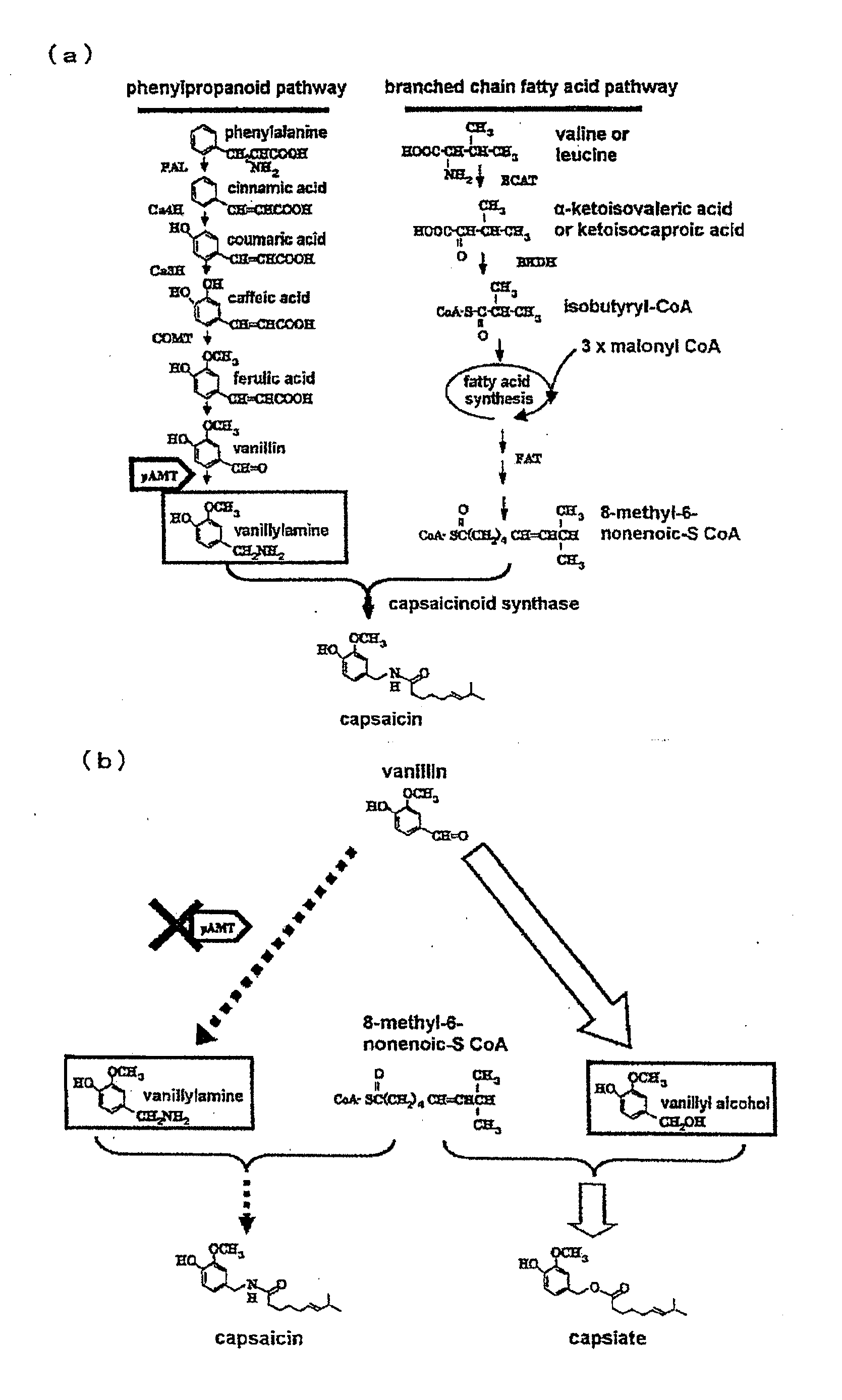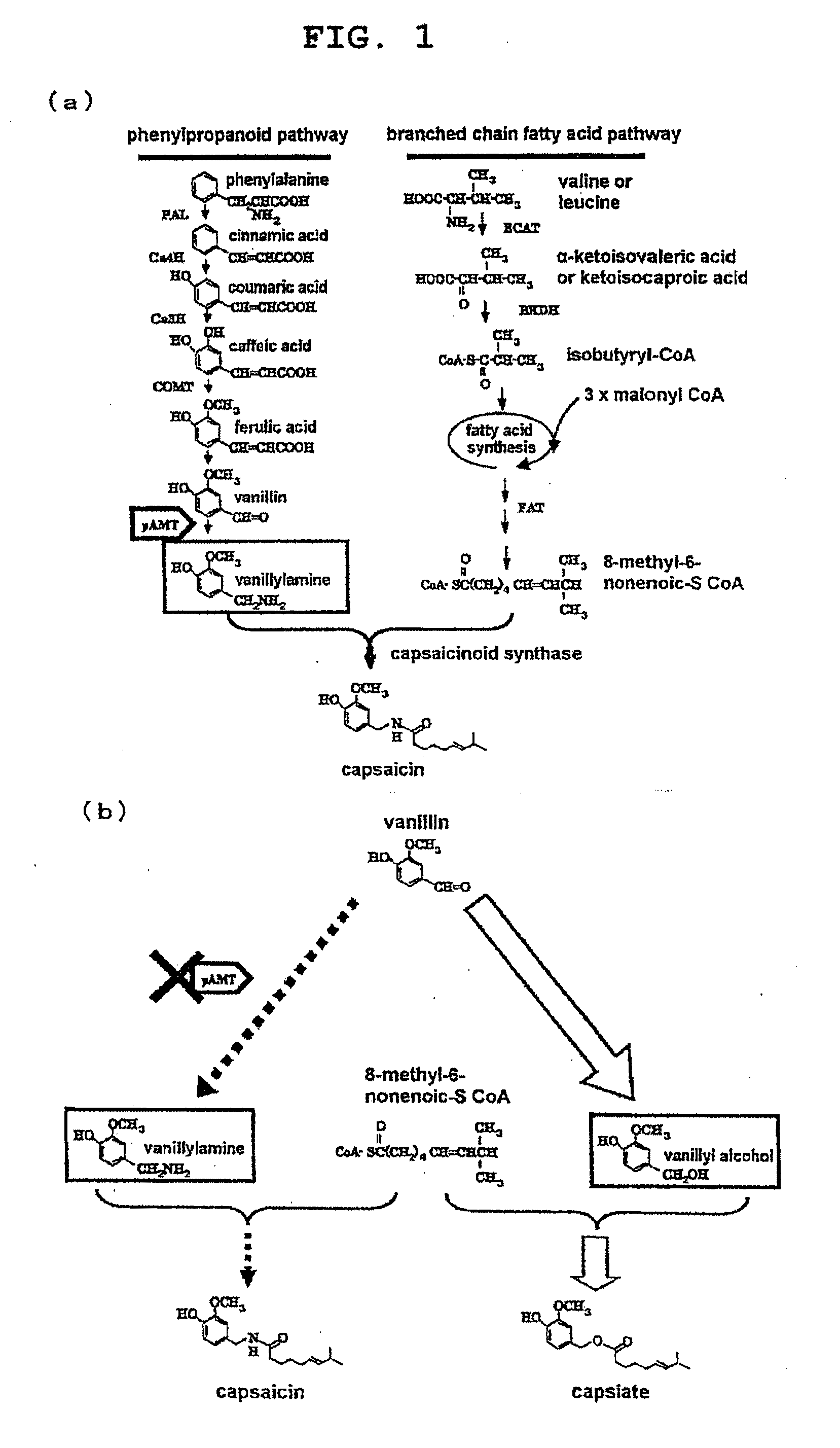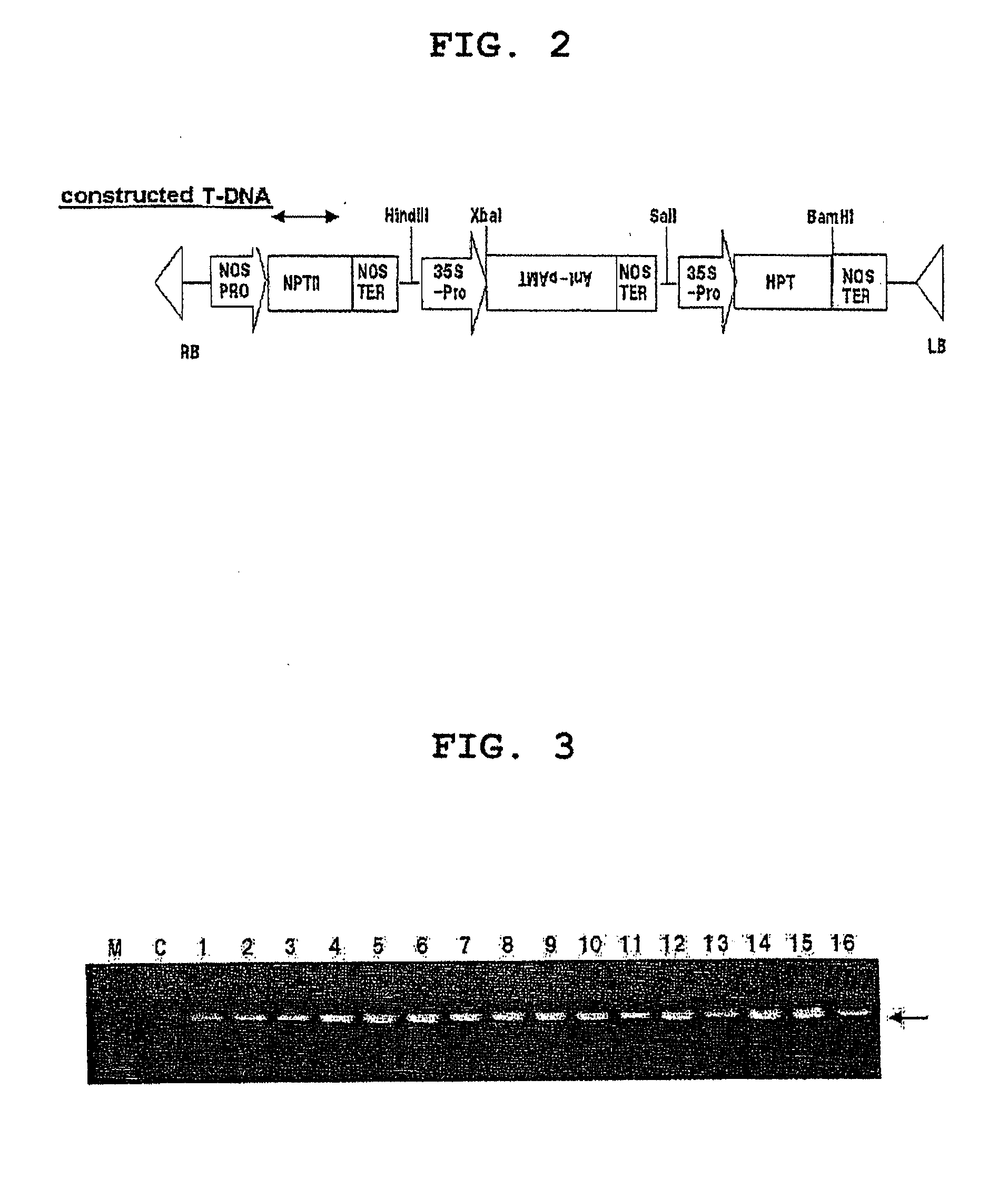Genetically modified plant capable of biosynthesizing capsinoid
a technology of biosynthesizing and capsinoid, applied in the direction of biochemistry apparatus and processes, fermentation, fatty-oil/fat production, etc., can solve the problems of individuals not enjoying the pungent taste of capsaicinoid compounds, gastrointestinal upset, and unreliable reasons for this for years, and achieve the effect of increasing the production of capsinoids
- Summary
- Abstract
- Description
- Claims
- Application Information
AI Technical Summary
Benefits of technology
Problems solved by technology
Method used
Image
Examples
example 1
Production of pAMT Gene Expression-Suppressive Transformed Chili Pepper
[0082]pAMT gene amplified by RT-PCR with cDNA extracted from CH-19 Sweet was inserted into a GUS region of Ti-plasmid vector pIG121-Hm in the antisense direction (FIG. 2). The plasmid was introduced into Agrobacterium tumefaciens EHA101 strain and used for transformation of chili pepper.
[0083]The surface of a seed of Capsicum annuum variety ‘Takanotsume’ was sterilized with 70% ethanol for 1 min and 2% sodium hypochlorite for 15 min, rinsed 3 times with sterile water, and sown in MS medium. Cotyledon germinated 10 days later was cut and transplanted to MS medium containing 10 mg / l benzyladenine (BA). 16 hr day-length culture was performed at 25° C. for 24 hr, and the cotyledon was immersed for 10 min in Agrobacterium suspension cultured in YEP medium containing 50 mg / l kanamycin and 50 mg / l hygromycin for 24 hr. To remove redundant Agrobacterium suspension, the leaf was placed on sterilized filter paper, and then...
example 2
Measurement of Capsiate and Capsaicin Contents of Transformed Chili Pepper
[0084]Fruits were taken from 16 strains of transformed chili pepper and Capsicum annuum variety ‘Takanotsume’ without introduction of a gene, and capsiate and capsaicin contents were measured by a conventional method. As a result, 3 transformed chili pepper fruits (TG-3, 8 and 14) were found to contain capsiate in larger amounts than in control Capsicum annuum variety ‘Takanotsume’. TG-3 and TG-8 had lower capsaicin contents than other strains (FIGS. 4(a) and 4(b)).
example 3
Transcription and Expression Analysis of pAMT Gene in Transformed Chili Pepper Fruit
[0085]RNA was extracted from a fruit of a strain with higher capsiate content, and RT-PCR analysis of transcription amount of endogenous pAMT gene was performed. As a result, the strain with high capsiate content was found to show suppressed transcription and expression of pAMT gene. On the other hand, in a strain wherein the capsiate content was not high even though the gene had been introduced, the transcription and expression of endogenous pAMT gene was not suppressed (FIG. 5). From the above results, it has been found that a plant can be modified to artificially synthesize capsiate, by suppression of expression of pAMT gene.
PUM
| Property | Measurement | Unit |
|---|---|---|
| Fraction | aaaaa | aaaaa |
| Strain point | aaaaa | aaaaa |
Abstract
Description
Claims
Application Information
 Login to View More
Login to View More - R&D
- Intellectual Property
- Life Sciences
- Materials
- Tech Scout
- Unparalleled Data Quality
- Higher Quality Content
- 60% Fewer Hallucinations
Browse by: Latest US Patents, China's latest patents, Technical Efficacy Thesaurus, Application Domain, Technology Topic, Popular Technical Reports.
© 2025 PatSnap. All rights reserved.Legal|Privacy policy|Modern Slavery Act Transparency Statement|Sitemap|About US| Contact US: help@patsnap.com



